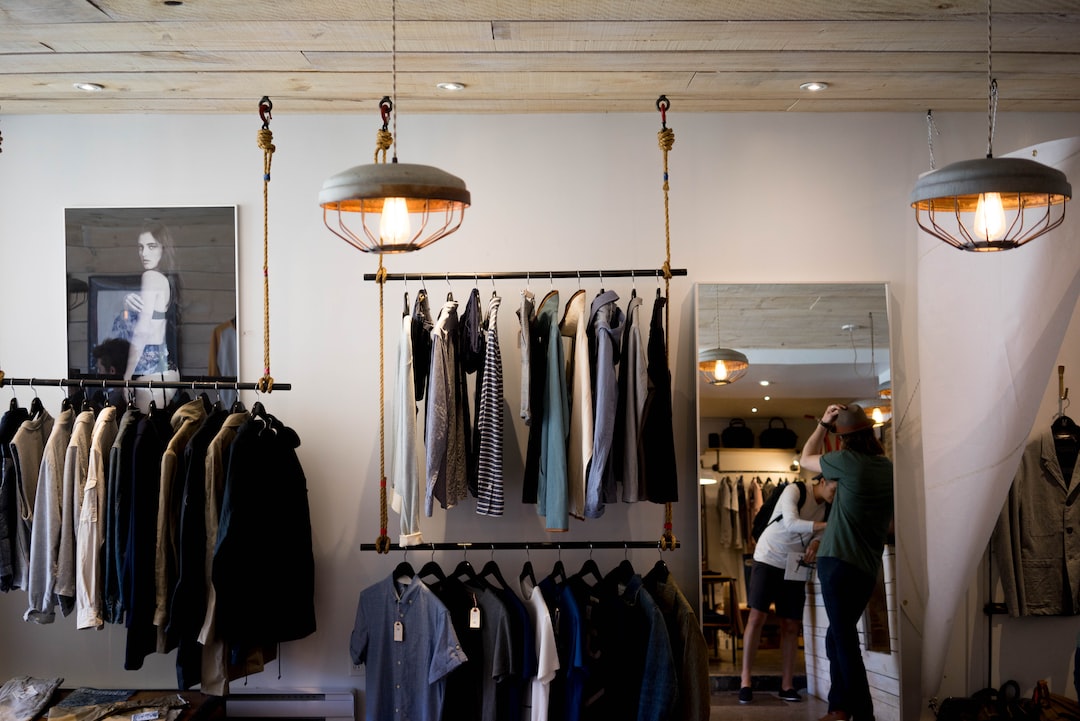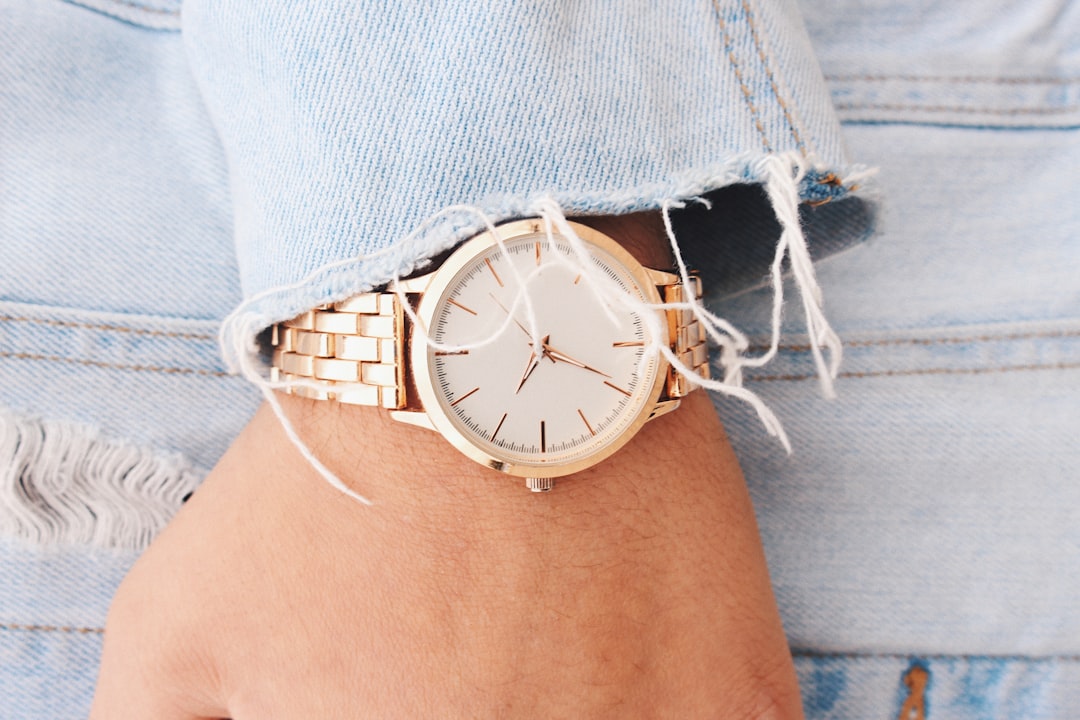The fashion industry has always been at the forefront of innovation, constantly pushing the boundaries of what is possible. In recent years, the advent of artificial intelligence (AI) has had a profound impact on the industry, revolutionizing everything from design and production to retail and customer experience. AI has the potential to transform the way we create, consume, and interact with fashion, opening up new opportunities for customization, sustainability, and efficiency.
At its core, AI is all about using data and algorithms to make better decisions. In the context of fashion, this means using machine learning and other AI techniques to analyze vast amounts of data on everything from consumer preferences and purchasing behavior to supply chain logistics and production processes. By doing so, AI can help designers, retailers, and consumers alike make more informed decisions, leading to better outcomes for everyone involved.
Of course, as with any new technology, there are both opportunities and challenges associated with AI in fashion. On the one hand, AI can help to reduce waste, improve sustainability, and personalize the shopping experience for consumers. On the other hand, it can also raise concerns around privacy, job displacement, and the potential for bias in algorithms. As we explore the impact of AI on the fashion industry in more detail, it’s important to keep these issues in mind and work towards solutions that maximize the benefits while minimizing the risks.
Style Recommendations: How AI is Helping Consumers Find Their Perfect Look
Artificial Intelligence (AI) has been making waves in the fashion industry in recent years, transforming the way consumers shop for clothes and accessories. One of the most significant ways that AI is changing the fashion industry is by providing personalized style recommendations to consumers.
Gone are the days when consumers had to rely on the advice of a salesperson or their own intuition when it came to selecting clothes that fit their personal style. With the help of AI algorithms, consumers can now receive personalized style recommendations based on their preferences, body type, and past purchases.
AI-powered fashion recommendation engines use a combination of machine learning and natural language processing (NLP) to analyze vast amounts of data from various sources. These sources include consumers’ browsing and purchase histories, social media activity, and even weather patterns. By analyzing this data, AI algorithms can identify patterns and make personalized style recommendations.
One of the most significant benefits of AI-powered style recommendations is that they help consumers save time and make better purchasing decisions. Instead of spending hours searching for the perfect outfit or accessory, consumers can receive personalized recommendations in seconds. This not only saves time but also reduces the frustration that often comes with shopping for clothes.
Furthermore, AI-powered style recommendations also help retailers increase sales and reduce returns. By providing personalized recommendations, retailers can increase the likelihood that consumers will make a purchase. Additionally, by recommending clothes and accessories that fit the consumer’s personal style and body type, retailers can reduce the likelihood of returns and exchanges.
AI-powered style recommendations are transforming the fashion industry by providing consumers with personalized recommendations based on their preferences and past purchases. This technology not only saves consumers time but also helps retailers increase sales and reduce returns. As AI continues to advance, we can expect to see even more innovative applications in the fashion industry.
As AI continues to advance, we can expect to see even more innovative applications in the fashion industry.
Virtual Try-Ons: AI-Powered Fitting Rooms and the Future of Retail
The fashion industry has been revolutionized by the use of AI technology. One of the most exciting developments is the implementation of virtual try-ons, which allows consumers to try on clothes virtually before making a purchase. This technology has the potential to transform the way we shop for clothes and the future of retail.
Virtual try-ons use AI-powered fitting rooms that allow consumers to see how clothes fit and look on their bodies without having to physically try them on. The technology uses computer vision and machine learning algorithms to create a 3D model of the consumer’s body, which is then used to simulate how clothes will fit and look on them. This technology has the potential to revolutionize the way we shop for clothes, making it easier and more efficient for consumers to find the perfect fit.
The benefits of virtual try-ons are numerous. For one, it saves time and effort for consumers who no longer have to physically try on clothes. It also reduces the number of returns due to ill-fitting clothes, which can be costly for both consumers and retailers. Additionally, virtual try-ons can increase consumer confidence in their purchases, as they can see how the clothes will look on them before making a purchase.
The implementation of virtual try-ons has also opened up new opportunities for retailers. By using AI-powered fitting rooms, retailers can collect data on consumer body types and preferences, which can be used to create more personalized and targeted marketing campaigns. This technology also has the potential to reduce waste in the fashion industry by allowing retailers to produce only the clothes that consumers are likely to purchase.
However, there are also challenges that come with the implementation of virtual try-ons. For example, the technology is not yet perfect and may not accurately simulate how clothes will fit on all body types. There is also the potential for privacy concerns, as the technology requires the collection of personal data such as body measurements.
Virtual try-ons are a promising development in the fashion industry that has the potential to transform the way we shop for clothes. While there are challenges that need to be addressed, the benefits of this technology cannot be ignored. As AI technology continues to evolve, we can expect to see more exciting developments in the fashion industry and in the future of retail.
Additionally, virtual try-ons can increase consumer confidence in their purchases, as they can see how the clothes will look on them before making a purchase.
Personalized Design: How AI is Enabling Customization and Sustainability in Fashion
As consumers become more conscious of the environmental impact of fast fashion, the demand for sustainable and customized clothing is on the rise. And AI is playing a key role in meeting this demand.
AI-powered design tools are making it possible for fashion brands to create custom designs based on individual preferences and body measurements. This means that consumers can have clothes that fit them perfectly and reflect their unique style.
Furthermore, AI is helping to reduce waste in the fashion industry by enabling on-demand production. Instead of producing clothes in bulk and hoping they sell, brands can use AI algorithms to predict demand and produce only what is needed. This reduces the amount of unsold inventory that ends up in landfills.
AI is also making it easier for designers to incorporate sustainable materials into their designs. By analyzing data on the environmental impact of different materials, AI algorithms can suggest alternatives that are more eco-friendly. This not only reduces the environmental impact of fashion but also helps to increase transparency in the supply chain.
Overall, AI is enabling a more sustainable and personalized approach to fashion. By using AI-powered design tools and on-demand production, fashion brands can reduce waste and meet the demand for customized clothing. And as AI continues to advance, we can expect even more innovations that will transform the fashion industry.
And AI is playing a key role in meeting this demand.
Supply Chain Optimization: How AI is Streamlining Production and Reducing Waste
The fashion industry is notorious for its complex and convoluted supply chain, which often involves multiple layers of production, distribution, and logistics. This complexity can lead to inefficiencies, delays, and waste, all of which can have a negative impact on the environment and the bottom line. However, with the advent of AI-powered supply chain optimization, the industry is undergoing a transformation that promises to streamline production, reduce waste, and improve sustainability.
At its core, AI-powered supply chain optimization involves the use of advanced algorithms and machine learning to analyze data and make informed decisions about production, inventory management, and distribution. By leveraging real-time data from a variety of sources, including sensors, RFID tags, and social media, AI-powered systems can identify inefficiencies, predict demand, and optimize production schedules, all while minimizing waste and reducing costs.
One key area where AI is having a significant impact is in inventory management. Traditionally, retailers and manufacturers have relied on manual processes and guesswork to manage inventory levels, which can lead to overstocking, understocking, and waste. However, with AI-powered inventory management systems, companies can accurately forecast demand, adjust production accordingly, and keep inventory levels optimized, all while reducing waste and minimizing costs.
Another area where AI is making a difference is in production scheduling. By analyzing real-time data on production capacity, lead times, and delivery times, AI-powered systems can optimize production schedules, reduce downtime, and improve efficiency. This not only saves time and money, but also reduces waste and improves sustainability by minimizing the use of resources.
Overall, the use of AI in supply chain optimization represents a significant opportunity for the fashion industry to reduce waste, improve sustainability, and increase efficiency. However, there are also challenges to consider, such as data privacy, ethical concerns, and the need for human oversight. As the industry continues to evolve and adopt new technologies, it will be important to balance the benefits of AI with the need for responsible and ethical practices.
Overall, the use of AI in supply chain optimization represents a significant opportunity for the fashion industry to reduce waste, improve sustainability, and increase efficiency.
Trend Forecasting: How AI is Predicting Fashion Trends and Influencing Design
The fashion industry is ever-evolving, and staying ahead of the curve is crucial for designers and retailers alike. AI is now playing a significant role in trend forecasting, providing valuable insights into consumer preferences and predicting what styles will be popular in the future.
By analyzing vast amounts of data from social media, search engines, and e-commerce platforms, AI algorithms can identify patterns and trends that might otherwise go unnoticed. This data can be used to predict which colors, fabrics, and styles will be in demand, helping designers and retailers make informed decisions about their collections.
In addition to predicting trends, AI is also influencing design itself. By training on large datasets of fashion images, AI algorithms can generate new designs that are both innovative and on-trend. This technology is already being used by some fashion brands to create unique pieces that are tailored to their customers’ preferences.
However, there are also challenges associated with AI-powered trend forecasting. One concern is the potential for homogenization, where all fashion becomes too similar as designers rely too heavily on AI-generated trends. Additionally, there is the risk that AI algorithms may perpetuate existing biases in the industry, such as favoring certain body types or skin tones.
Despite these challenges, the use of AI in trend forecasting is likely to continue to grow in the coming years. As the technology becomes more sophisticated, it has the potential to revolutionize the way we think about fashion and design. By providing valuable insights into consumer preferences and predicting future trends, AI is helping the fashion industry stay ahead of the curve and meet the ever-changing demands of consumers.
Despite these challenges, the use of AI in trend forecasting is likely to continue to grow in the coming years.
Conclusion: The Future of Fashion with AI: Opportunities and Challenges Ahead
As we have seen throughout this blog post, AI is revolutionizing the fashion industry in multiple ways. From helping consumers find their perfect style to enabling customization and sustainability in design, AI is transforming the way we approach fashion. However, with these opportunities come challenges that must be addressed.
One of the challenges is the potential loss of jobs in the fashion industry. As AI takes over tasks such as trend forecasting and supply chain optimization, human workers may be displaced. It is important for fashion companies to consider the impact of AI on their workforce and implement measures to mitigate any negative effects.
Another challenge is the potential for AI to perpetuate bias and discrimination. As AI algorithms are trained on data sets that may contain biased information, there is a risk that these biases will be reflected in the recommendations and designs generated by AI. It is crucial for fashion companies to ensure that their AI systems are designed and tested for fairness and inclusivity.
Despite these challenges, the opportunities presented by AI in the fashion industry are vast. AI has the potential to make fashion more sustainable, more personalized, and more efficient. As fashion companies continue to embrace AI, it is important that they do so in a responsible and ethical manner.
In conclusion, the future of fashion with AI is both exciting and challenging. As we continue to explore the possibilities of AI in fashion, we must remain vigilant in addressing the potential risks and ensuring that AI is used for the greater good. With the right approach, AI has the potential to transform the fashion industry for the better.





